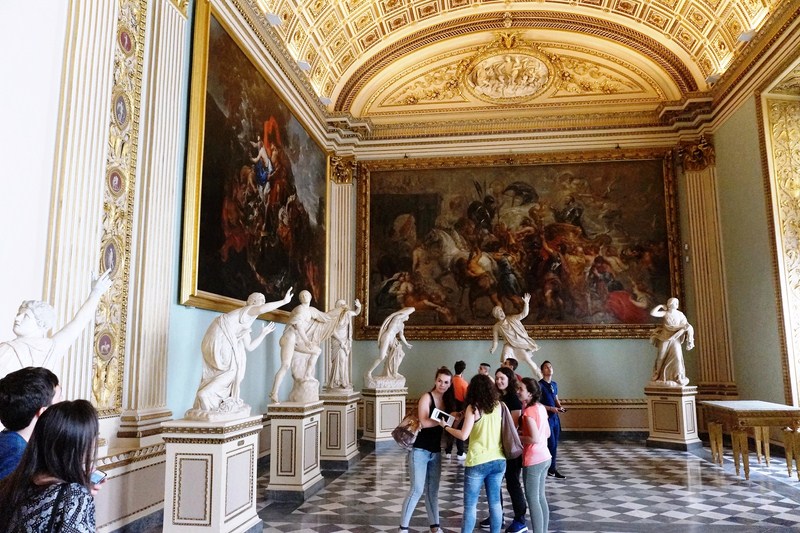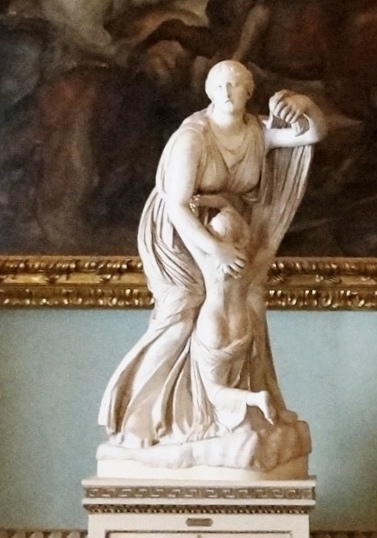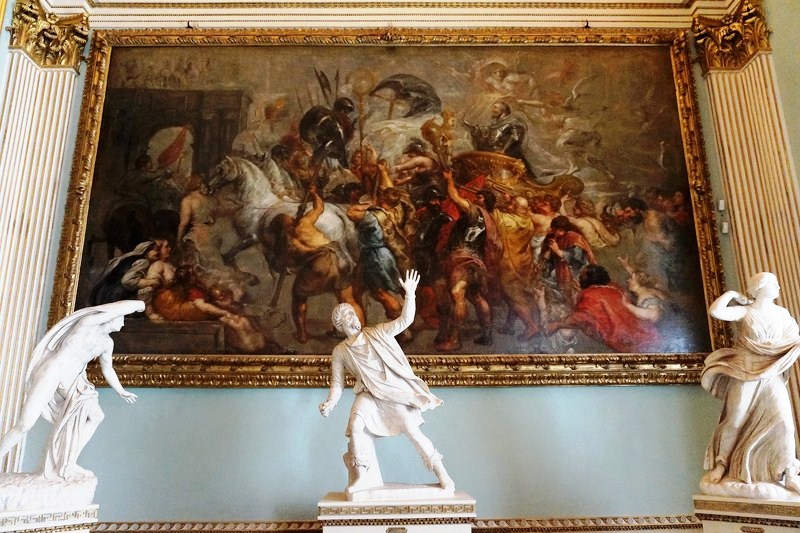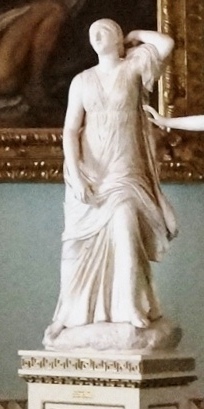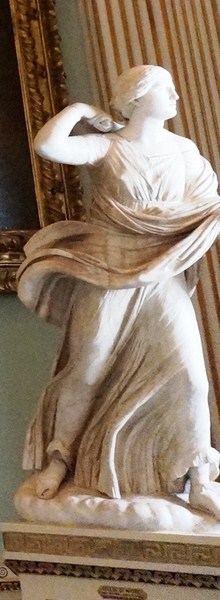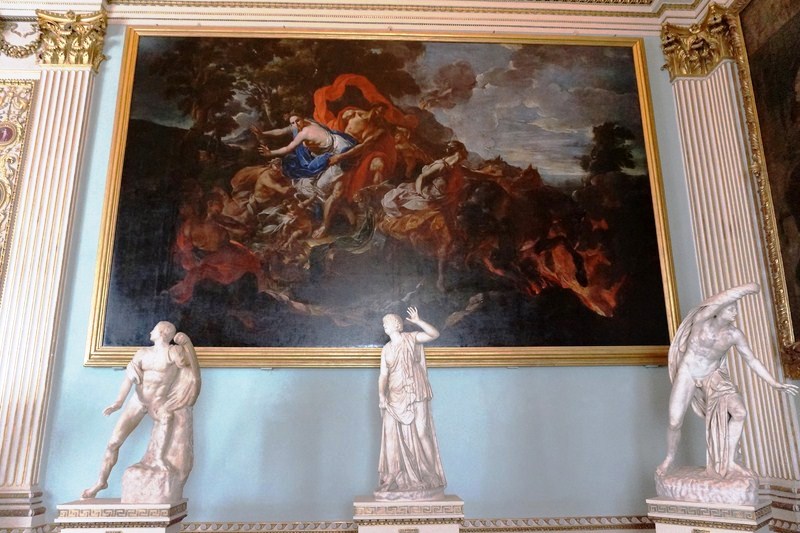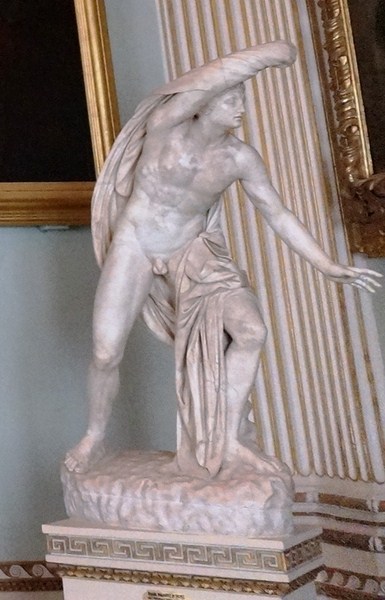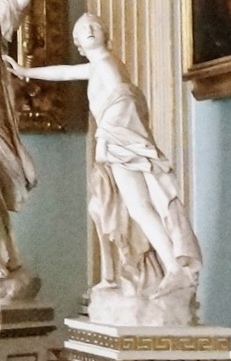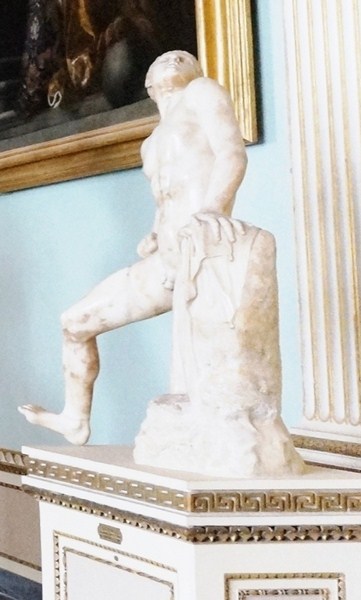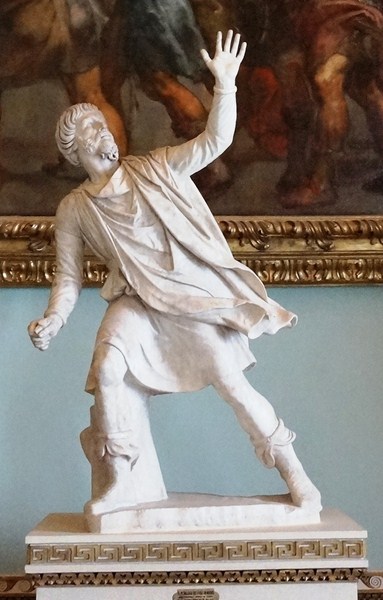Among the rich collection of sculptures of the Uffizi Gallery, there is one room dedicated to a group of related sculptures – the Great Niobe’s Room (Sala della Niobe). One of the most fascinating rooms in the Gallery, this room houses a group of 12 ancient Neo-Classical marble sculptures (called the Uffizi Niobid group), Roman copies from an original Hellenistic work dating to the 2nd to 3rd century BC.
In Greek mythology, Niobe, born of the royal house of Phrygia, the arrogant daughter of Tantalus and wife of Amphion (the founder and ruler of Thebes), had 14 children (7 girls and 7 boys). She was so proud of her own offspring so much so that in the temple, Niobe demands the worshipers of the goddess Leto to worship her instead: “Why do you worship her, not me? My father is Tantalus, my mother is a goddess, my husband establishes and rules this city Thebes, and I have seven sons and seven daughters whereas Latona has only two children….” Manto, the seeress daughter of Tiresias, overheard Niobe’s remark and bid the Theban women placate Leto, in vain.
In his Iliad, Homer wrote about her arrogance and pride. Leto, in a bid to punish Niobe’s pride, sent her two children, Apollo and Artemis , to kill Niobe’s children. With bows and poisonous arrows, Artemis aimed to kill the females while Apollo was charged to kill the males. According to some versions, Artemis and Apollo killed them all while, according to others, Meliboea (Chloris) and Amyclas, managed to escape.
According to the Latin poet Ovid in his “Metamorphoses,” that extreme terror drove Amphion to suicide and turned Niobe into a marble block. Her tears of pain gave life to a source, on Mt. Sipylus in Lydia (Mansia, Turkey).
The clear educational purpose of the myth (warning against damages of pride) made it subject of many artistic and literary representations. The power of this ancient myth does not diminish through time and Niobe’s tragic story has inspired many artistic and literary representations through the periods such as the Middle Ages, Renaissance, Baroque, Neo-Classical, and by Dutch painters.
In 1583, a series of 12 famous surviving Greek sculptures, by anonymous sculptors, was found in the Vigna Tomasini vineyard, near Porta San Giovanni. Cardinal Ferdinando de Medici (the future Grand Duke of Tuscany) immediately bought these for his Roman villa.
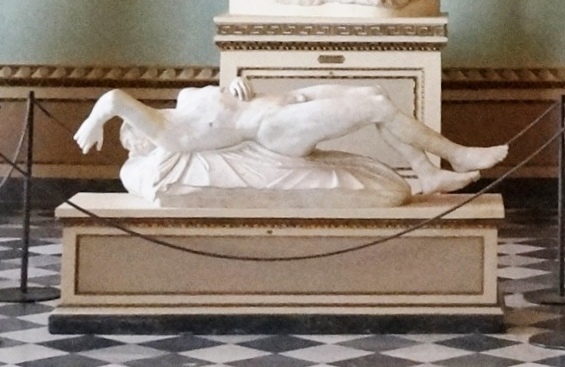
“Dying Niobid” (or “”Lying Niobid”) is a marble statue of a recumbent male Niobid lying on a cloak (1st century AD, after a model of the 2nd half of the 4th century BC., Pentelic marble). Height 47.5 cm., width 45.5 cm., length (with restored parts) 177 cm.
Around 1770, the sculptures were brought to Florence and, in 1775, were brought to the Uffizi Gallery. From 1779 – 1780, at the peak of Neo-Classical period (when an important air of artistic renewal was breathed in Florence), Grand Duke Pietro Leopold of Lorraine commissioned the architect Gasparre Maria Paoletti to set up the specially built, 29 by 9 m., 260 sq. m. exhibition room where they are still displayed.
On May 27, 1993, the room was hit really hard (its frescoes were damaged beyond repair) by a terrible car bomb explosion in Via dei Georgofili initiated by the Sicilian Mafia that targeted the Uffizi Gallery (5 people died, 60 were wounded, 5 minor works were destroyed and 30 others damaged).
In May 2012, the room was closed because the weight of its 17 marble statues was found to have sunk the floor. The complex and important restoration work, costing an approximately €500,000, involved consolidating the arches of the ceiling and removing the moving parts of the paved floor piece by piece, before reinforcing it. It reopened on February 2013.
Today, the 12 statues are lined up along the walls, spaced apart to allow visitors to admire them in isolation, sacrificing part of the relationships between the various works, as well as the a coffered ceiling covered with gold leaves, the beautiful gilded stucco and light marbles of the floor that highlight the strong natural light which enter through the large windows that overlook Via Lambertesca.
The sculptures, presenting the divine power over human’s arrogance and egoism, represent young characters lying, kneeling, fleeing, pleading to the sky or shot dead in dramatic and theatrical way as they show their great pain and terror at the moment before their tragic death. The focus of the group is Niobe, who tries to protect her youngest daughter, and directs her terrified and pleading gaze skyward.

Henry IV Triumphal Entry into Paris (Peter Paul Rubens) and The Senators of Florence swearing Allegiance to Ferdinando II de’Medici (Justus Sustermans)
The Niobid statuary was flanked by a group of monumental paintings – Henry IV in the Battle of Ivry and Henry IV’s Triumphal Entry into Paris, both by Peter Paul Rubens; The Senators of Florence swearing Allegiance to Ferdinando II de’Medici (Justus Sustermans) and The Rape of Proserpina (Giuseppe Grisoni).
Damaged in the 1993 Mafia bombing, the Rubens canvases had been restored and rehung. The Suttermans canvas was restored in 2001 and the Gisoni canvas in 2004.
Great Niobe Room: Room 42, Second Floor, Uffizi Gallery: Piazzale degli Uffizi (adjacent to the Piazza della Signoria), Florence, Italy. Open Tuesdays to Sundays, 8:15 AM to 6:50 PM. Closed on Mondays, December 25 and January 1. Website: www.uffizi.it. Regular admission: €20. Reduced Price Ticket: €2 for European Union citizens only, aged +18 | -26 upon showing passport or ID, and citizens of non-EU Countries only upon mutual agreement (Norway, Iceland, Switzerland, Liechtenstein). The ticket office closes at 5.30 PM and closing operations start at 6.20 PM.
Free admission for children under 18 years of any nationality (show passport or ID card, children younger than 12 must be accompanied by adults); persons with disabilities (if handicap is certified under Law 104/92, D.M. 507/97 and D.M. 13/2019); scholars; university students and teachers; student groups and teachers; tour guides and interpreters; journalists (enrolled in the Italian Association of Journalists); employees of the Italian Ministry of Cultural Heritage and Activities and Tourism; and members of the International Council of Museums (ICOM).
Taking photographs and videos is permitted provided they are taken without flash, lights and tripods, for personal, non-profit use only. The museum’s busiest times are weekends, Tuesdays and mornings. Doubtless, the best part of the day to visit the museum is in the afternoon; better after 4 PM once large groups have left the museum. Long lines are inevitable so, despite the slightly higher cost of entrance (extra booking fees), it is better to buy your Uffizi tickets ahead of time to skip the long line and spend more time in the museum.
How to Get There: bus service from Santa Maria Novella Station, bus 23.

